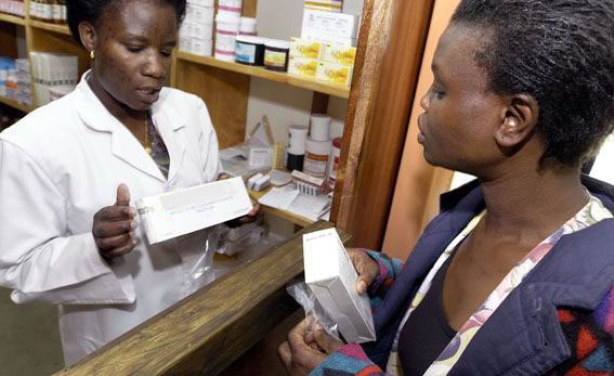[IRMA press release]
 October 2, 2013 – IRMA applauds the launch of the world’s first-ever Phase II rectal microbicide trial. The Microbicide Trial Network’s study, called MTN-017, will test a reduced glycerin formulation of tenofovir gel applied rectally. Volunteers consisting of gay men, other men who have sex with men, and transgender women will participate in the study at sites in the United States and in Thailand, South Africa, and Peru.
October 2, 2013 – IRMA applauds the launch of the world’s first-ever Phase II rectal microbicide trial. The Microbicide Trial Network’s study, called MTN-017, will test a reduced glycerin formulation of tenofovir gel applied rectally. Volunteers consisting of gay men, other men who have sex with men, and transgender women will participate in the study at sites in the United States and in Thailand, South Africa, and Peru.“Today feels like every holiday imaginable rolled into one,” said Jim Pickett, chair of International Rectal Microbicide Advocates (IRMA.) “The launch of the MTN-017 study is a milestone long in the making and marks a giant leap forward in the development of safe, effective, acceptable, and accessible products that could be used to prevent HIV during anal intercourse.”
IRMA is pleased to have participated in an intensive community input process with the Microbicide Trials Network that included in-person consultations with advocates and key stakeholders in Thailand, South Africa, Peru and the United States. “The dreams and desires of many men, women, and transgender individuals the world over can be heard loud and clear in the design of the MTN-017 trial. This deep collaboration between scientists and community members is key to the success of this trial and to the rectal microbicide field in general,” said Pickett.
When microbicides were first imagined, they were “vagina-centric.” While many embraced the notion of creating vaginal products women could control, the majority of the HIV/AIDS community— scientists and advocates alike— dismissed the possibility of developing rectal microbicides for use during anal intercourse as an HIV prevention method. It was not considered feasible and the pursuit was seen as hopeless, even laughable. At best, the rectal microbicide field would consist of testing vaginal microbicides for rectal safety, because these products would undoubtedly end up in the rectum despite their intended destination.
IRMA thanks the visionary scientists, advocates and funders like the U.S. National Institutes of Health who bucked prevailing “wisdom” and have remained steadfast in their commitment to developing new HIV prevention methods for use during anal intercourse.
“I feel like we are taking two giant leaps forward today. One in the fight against HIV, and the other in the fight against ignorance and small thinking,” said Pickett.
# # # #
International Rectal Microbicide Advocates (IRMA) is a global network, housed at AIDS Foundation of Chicago, comprised of more than 1,200 advocates, scientists, policy makers and funders focused on rectal microbicide research and advocacy and related issues such as access to safe, condom-compatible lubricants.
Learn more about the MTN-017 study here.
Watch this video “The Rectal Revolution is Here: An introduction to rectal microbicide clinical trials” in English, Spanish, or Thai.
-------------------
*Join IRMA's robust, highly-active. moderated, global listserv addressing rectal microbicide research and advocacy as well as other interesting new HIV prevention technologies by contacting us at rectalmicro@gmail.com. Joining our listserv automatically makes you a member of IRMA - a network of more than 1,100 advocates, scientists, policy makers and funders from all over the world.
*Please look for us on Facebook: www.facebook.com/InternationalRectalMicrobicideAdvocates, and you can follow us on Twitter: @rectalmicro.
-------------------













